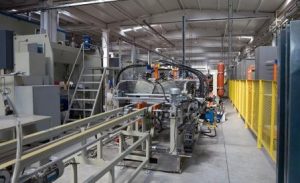General Sheet Metal Operations
Shearing
It takes place when punch and die are used. The quality of the cut surface is greatly influenced by the clearance between the two shearing edges. However, the basic shearing operations are described in the following lines.
Cutting
It means severing a piece from a strip with a cut along a single line.
Parting
It signifies that scrap is removed between the two pieces to part them.
Blanking
It means cutting a whole piece from sheet metal just enough scrap is left all around the opening to assure that the punch has metal to cut along its entire edge. The piece detached from the strip is known as blank and is led for further operations. The remaining metal strip is scrap. Blanking is nearly almost the first operation and may be the only one necessary or it may be followed successively by many others. Blanking is often combined with other operations in one tool, all the work being performed at one stroke of the press. A blanking die must have clearance, otherwise the blank would not fall freely, and it might remain struck in the die block.
Punching
It is the operation of producing circular holes on a sheet metal by a punch and die. The material punched out is removed as waste. Piercing, on the other hand, is the process of producing holes of any desired shape.
Notching
It is a process of removing metal to the desired shape from the side or edge of a sheet or strip.
Slitting
When shearing is conducted between rotary blades, the process is referred to as slitting. It cuts the sheet metal lengthwise.
Nibbling
It is an operation of cutting any shape from sheet metal without special tools. It is done on a nibbling machine.
Trimming
It is the operation of cutting away excess metal in a flange or flash from a piece.
Lancing
It makes a cut part way across a strip.
Forming
It is a metal working process in which the shape of the punch and the die is directly reproduced in the metal with little or no metal flow. Source A Textbook of Manufacturing Processes and Workshop Technology by Rajender Singh.













Post Comment
You must be logged in to post a comment.